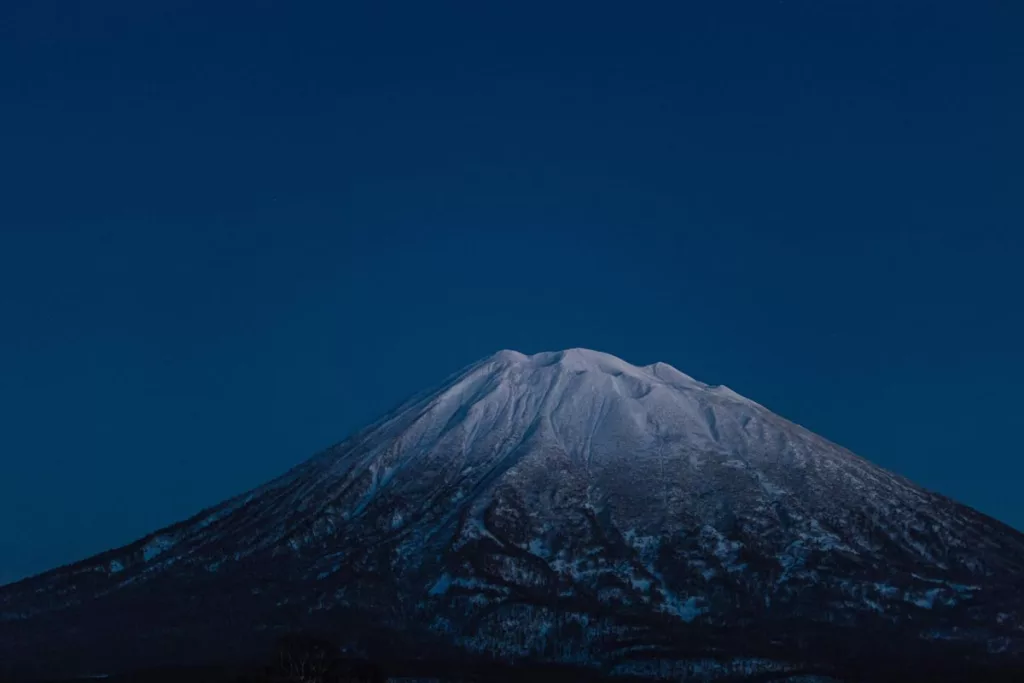
Located in the northern reaches of Japan, Hokkaido is a captivating destination that transforms into a snow-capped paradise during the winter months. Its snowy landscapes, rich culture, and diverse activities make it a must-visit for travelers seeking an unforgettable experience.

Hokkaido’s winter charm is perhaps best exemplified by the world-famous Sapporo Snow Festival, a celebration of ice and snow that draws visitors from across the globe. Imagine strolling through a dreamlike landscape adorned with intricate ice sculptures, where the city of Sapporo itself becomes a canvas for artists to craft frozen masterpieces. This event alone is reason enough to explore Hokkaido in the winter, but it’s only the beginning.
Beyond the festival, Hokkaido offers a plethora of exciting experiences. For thrill-seekers, the island boasts world-class ski resorts with powdery slopes and adrenaline-pumping activities like snowboarding and snowmobiling. Nature enthusiasts will find solace in Hokkaido’s pristine national parks, where winter hiking and wildlife viewing are extraordinary.
In this blog post, we’ll unveil the many fun and interesting things to do in Hokkaido, taking you on a journey through its winter wonders, cultural delights, and unique experiences. Whether you’re an adventurer, a foodie, or simply a lover of scenic beauty, Hokkaido promises to enchant and inspire, making your winter getaway an unforgettable adventure.
Destination Overview:
Hokkaido, the second-largest of Japan’s four main islands, is known for its rugged wilderness, stunning national parks, and vibrant indigenous Ainu culture. It offers a distinctive Japanese experience that combines outdoor adventures with culinary delights.
Travel Planning Information:
Best Time to Visit: Hokkaido is a year-round destination. Summer (June to August) is perfect for outdoor activities, The region undergoes a mesmerizing snowy transformation during the winter months, spanning from December through February. We recommend Hokkaido in the winter!
Duration: Plan for at least a week to fully explore Hokkaido’s diverse attractions.
Travel Restrictions: Check for visa requirements and any COVID-19 travel guidelines before planning your trip.
How to Get There:
Air Travel to Hokkaido:
Domestic Flights: The fastest and most convenient way to reach Hokkaido is by taking a domestic flight from major Japanese cities such as Tokyo, Osaka, or Nagoya to one of Hokkaido’s main airports, like New Chitose Airport in Sapporo, Hakodate Airport, or Asahikawa Airport.
Bullet Train (Shinkansen):
You can also travel to Hokkaido by taking the Shinkansen, or bullet train. The Hokkaido Shinkansen runs from Tokyo to Shin-Hakodate-Hokuto Station and then continues on to Sapporo. The journey from Tokyo to Sapporo takes approximately 4 to 4.5 hours.
Ferry:
If you prefer a scenic journey, you can take a ferry from various ports on Japan’s main island, Honshu, to Hokkaido. There are several ferry routes, including those from ports like Aomori to Hakodate or Otaru.
Driving:
If you have access to a vehicle or plan to rent one, you can drive to Hokkaido. The Seikan Tunnel connects Honshu and Hokkaido, making it possible to drive across. Be sure to check the driving conditions and have the necessary permits and documentation.
Bus:
Buses do oprerate on the island of Hokkaido, but in our research we did not see the opportunity to travel there via a different Japanese island. Traveling on the island of Hokkaido via bus offers a unique opportunity to explore its stunning landscapes and charming towns at a leisurely pace. As you ride through the vast countryside, you’ll be treated to panoramic views of snow-capped mountains, pristine lakes, and lush green fields. Hokkaido’s efficient bus network connects major cities and remote areas, making it an accessible and scenic way, (albeit a slower modal), to experience the island’s natural beauty.
Accommodations:
Hokkaido offers a range of accommodation options, from luxurious hot spring resorts (ryokans) in Noboribetsu to cozy guesthouses in Sapporo’s Susukino district.
Things to Do:
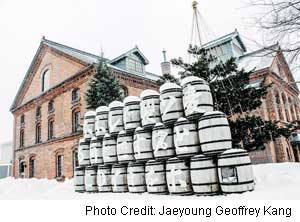
Sapporo: Explore the capital city, Sapporo, known for its beer, the Sapporo Beer Museum, and the annual Snow Festival (Yuki Matsuri).
Daisetsuzan National Park: Hike through this pristine wilderness, home to Japan’s tallest mountain, Mt. Asahidake.
Shikotsu-Toya National Park: Visit Lake Shikotsu and Lake Toya, both known for their stunning scenery and outdoor activities.
Furano and Biei: Enjoy the vibrant lavender fields in Furano and the picturesque landscapes in Biei.
Ainu Culture: Learn about the indigenous Ainu culture at the Ainu Museum in Shiraoi.
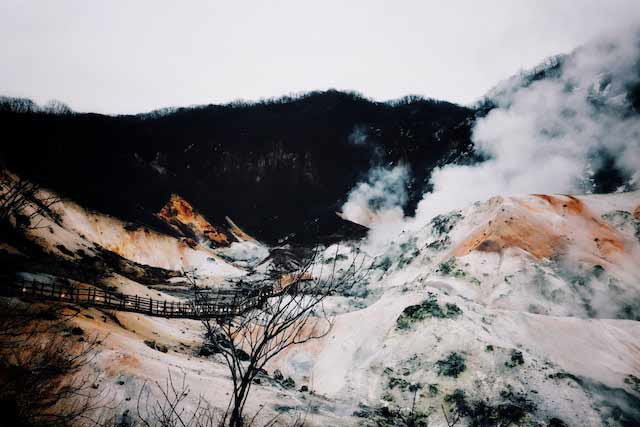
Jigokudani (“Hell’s Valley): Visiting Jigokudani in the winter is a mesmerizing experience as the entire landscape transforms into a serene, snow-covered wonderland. The contrast between the steaming hot springs and the snowy surroundings creates a magical atmosphere that’s perfect for relaxation and photography. Don’t forget to catch a glimpse of the famous Japanese macaques, often referred to as “snow monkeys,” as they soak in the warm waters amid the frosty beauty of Jigokudani’s winter scenery. The Jigokudani Monkey Park, located in the Jigokudani Valley in Nagano Prefecture, is home to these macaques, famous for their adaptation to cold climates and their behavior of soaking in natural hot springs during winter. The park was established to provide a safe environment for these monkeys while allowing tourists to observe them up close. Japanese macaques are considered a near-threatened species due to habitat loss, making the park essential for their conservation efforts. While foraging in the surrounding forest is their primary source of food, the park staff occasionally provides supplementary food to ensure their well-being during harsh winters.
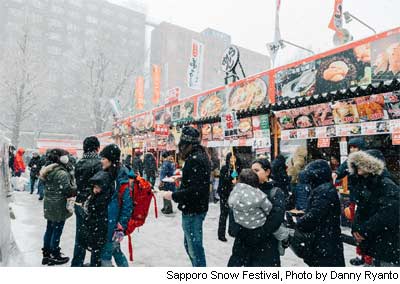
The previously mentioned Sapporo Snow Festival of course! It is one of the most famous and popular winter festivals in the country and draws visitors from all over the world. The festival typically takes place in early February and lasts for about a week. Take in illuminated sculptures, cultural performances, food stalls. But don’t forget about all the winter activities! The festival features an international ice sculpture contest where teams from around the world compete to create stunning ice sculptures. Visitors can also enjoy ice skating rinks set up at various festival sites, and snow slides and snowboarding ramps for thrill-seekers to enjoy. The festival typically concludes with a spectacular fireworks display that lights up the night sky over Sapporo. It’s a breathtaking finale to the week-long celebration.
Dining and Cuisine:
Indulge in Hokkaido’s renowned culinary delights, including fresh seafood, Sapporo ramen, and dairy products like Hokkaido milk and cheese, and other unique regional specialties. Here are four top places to dine in Hokkaido:
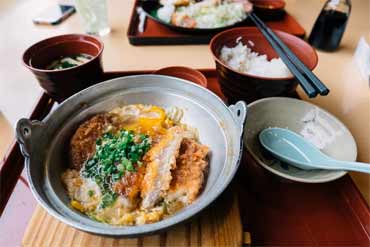
- Sapporo: Hokkaido’s capital city, Sapporo, offers a wide range of dining options. Try the Susukino district for fresh seafood at Nijo Fish Market or visit the famous Ramen Yokocho for a variety of ramen styles. Genghis Khan, a local barbecue specialty featuring grilled lamb, is also a must-try.
- Otaru: This charming port city is known for its seafood, especially sushi and sashimi. Otaru is famous for its seafood markets and restaurants along the canal, offering some of the freshest catches from the Sea of Japan.
- Furano and Biei: These towns in central Hokkaido are known for their dairy products, including cheese and ice cream. Don’t miss the chance to try local dairy dishes like cheese fondue and soft-serve ice cream.
- Noboribetsu: This region is famous for its hot springs (onsen) and offers a unique dining experience known as “Jigokudani Katsudon.” It’s a pork cutlet bowl served with a special sauce and egg, cooked in the natural steam vents of Hell Valley (Jigokudani).
These are just a few of the many dining options Hokkaido has to offer. The region is also known for its farm-to-table cuisine, so be sure to explore local markets and small eateries to savor the best of Hokkaido’s food culture.
Budgeting and Costs:
Hokkaido can be expensive, especially during peak seasons. Plan your budget accordingly, and consider utilizing regional transportation passes.
Local Culture and Etiquette:
Respect the local customs and traditions, and be mindful of the Ainu culture’s significance in the region.
Safety and Health:
Hokkaido is generally safe for travelers. Ensure you have travel insurance and dress warmly during winter visits.
Photography and Visuals:
Hokkaido’s breathtaking landscapes, from snow-covered peaks to lush fields, provide endless opportunities for stunning photographs.
Practical Tips:
- Pack appropriate clothing for the season, especially if you’re visiting during winter.
- Familiarize yourself with the local transportation system, including the Japan Rail (JR) Pass options.
- Respect nature and wildlife during outdoor activities.
- Local Insights:
- Be sure to engage with and consider purchasing from local Ainu artisans who share the intricate art of Ainu crafts and storytelling.
Conclusion:
Hokkaido is a destination that immerses you in the untamed beauty of Japan’s northern wilderness. Whether you’re exploring national parks, savoring delectable cuisine, or learning about the Ainu culture, Hokkaido promises an adventure like no other. So, pack your bags, embrace the wild side of Japan, and create unforgettable memories on this unique island.
Want to learn about other Winter Destinations? Be sure to check out Escape to Chill: Discover 10 Magical Winter Destinations Around the Globe
Leave a Reply